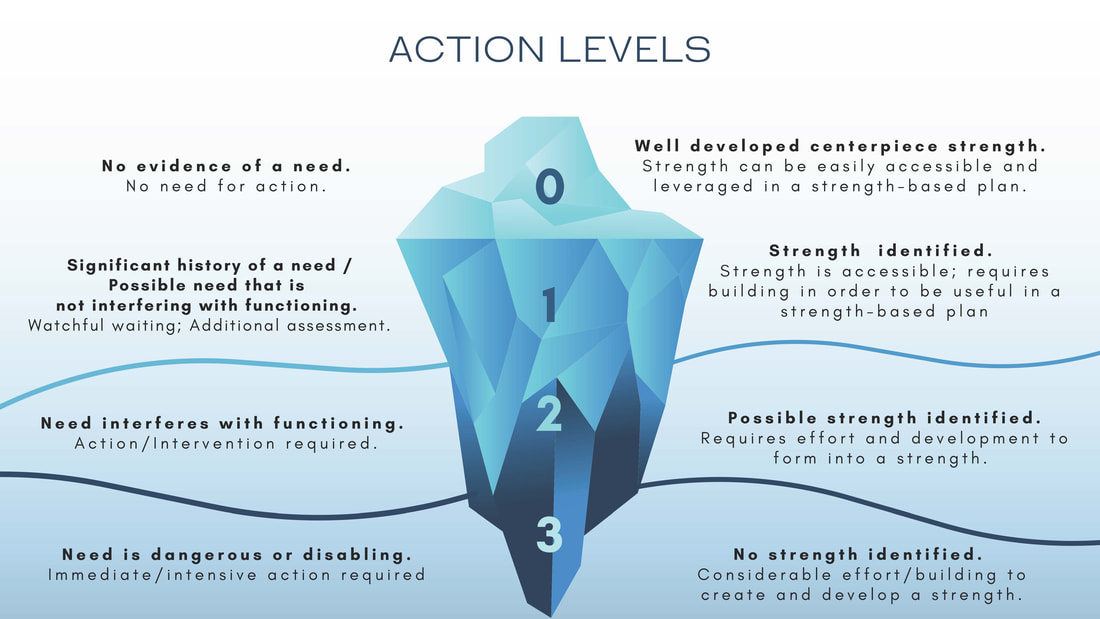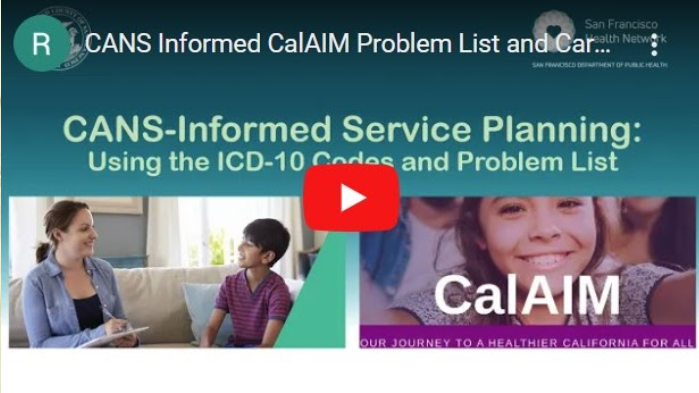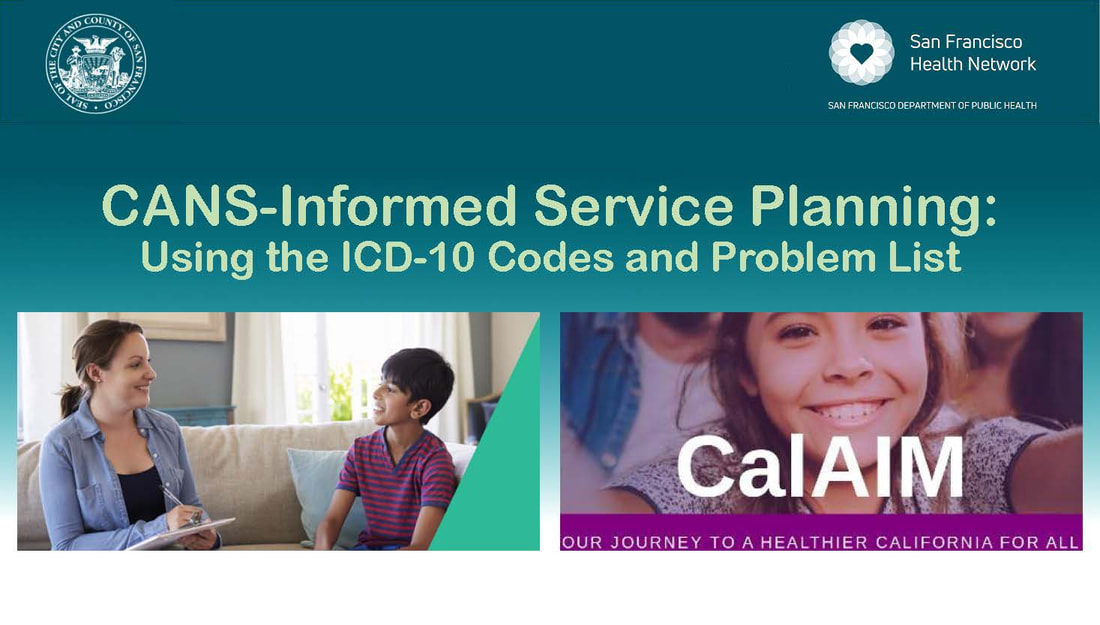CANS Strengths & Needs Iceberg
The CANS Strengths & Needs Iceberg tool uses an iceberg visual to show that 2s and 3s (beneath the water line) often need attention of some type, as both indicate a significant need or a lack of strength in a particular area.
CANS and CalAIM Working Together
Regardless of what your plan looks like, all services benefit from a road map. CANS is a valuable tool in developing a road map to help clients reach their desired outcomes. It allows for more individualized support to address the unique needs of each client by drawing upon their identified strengths and targeting their specific needs.
Using the CANS and CalAIM Problem List in Treatment Planning with Clients
Ritchie Rubio Ph.D.
Director of Practice Improvement and Analytics
Children, Youth, and Families System of Care
[Note: Some information/forms referenced in this presentation may be San Francisco-specific.]
Director of Practice Improvement and Analytics
Children, Youth, and Families System of Care
[Note: Some information/forms referenced in this presentation may be San Francisco-specific.]
- Source: SF BHC CYF T.I.P.s - CANS Tools
Care/Treatment Planning Worksheet
The worksheet was created by Seneca Family of Agencies and is a tool that allows the team to identify:
Download the full Treatment Plan Worksheet to use it in treatment planning.
- Background needs
- Care/Treatment target needs
- Care/Treatment target needs (Parking Lot)
- Anticipated outcomes
- Goals,
- Useful strengths
- Strengths to build
- Activities
Download the full Treatment Plan Worksheet to use it in treatment planning.
Trauma Informed Planning Tips
- Consider all of the individual's needs and strengths.
- Include the child and family in the treatment planning process.
- Collaborate with other professionals that are serving the child.
- Consider how the identified needs in the CANS and ANSA assessment are related to each other
- Which needs are part of a coping response?
- Which needs surface when the individual experiences trauma triggers?
- Which needs result from difficulty forming or maintaining healthy relationships?
- Which needs result from difficulty with emotional regulation?
- Which needs are related to the individual's current perception of their own safety?
- Which needs are part of a coping response?
- Rely on other professionals providing services to better address the identified needs.
- Only include the number of needs that can be realistically addressed in a services or treatment plan. ALWAYS include any items rated a 3 and consider completing a new assessment on a more frequent basis if all the items could not be captured in the initial assessment.
- Consider the individual for more intensive services if their needs are too great to be addressed with outpatient services.
These tips and more are available from the Northwestern University Center for Child Trauma, Assessment, Services and Interventions.



